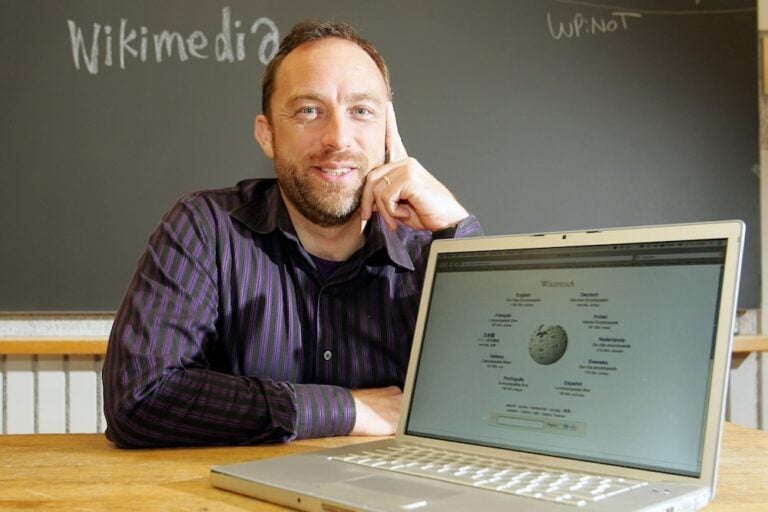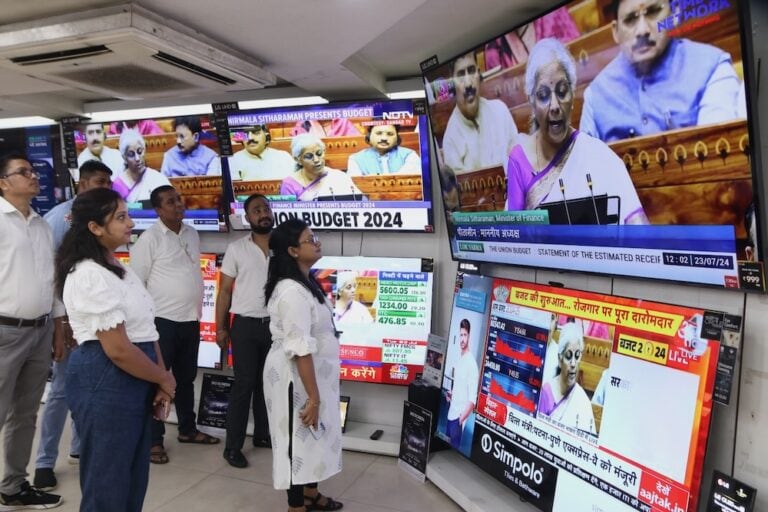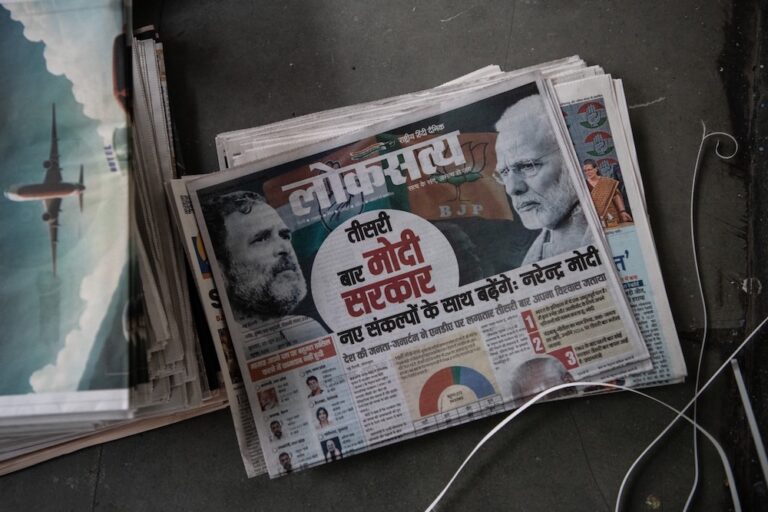Hate speech, law and order, and mass panic are realities India's states have been living with for years. It would appear that, in dealing with free expression on the internet, India's politicians seem to err on the side of control.
India’s National Integration Council met in the last week of September 2013 to discuss the threat of communal violence in the country. The council, first set up in the early 1960s, gives senior Indian politicians and public leaders a platform to discuss issues that could divide the country along caste, communal, language and regional fault lines. This September, with the backdrop of violent communal clashes that have seen over 50 killed and 40,000 displaced in India’s most populous state, Uttar Pradesh, Prime Minister Manmohan Singh sat with some of the Chief Ministers, to discuss how to resolve these issues.
There were early reports that the meeting was going to discuss the ‘misuse’ of social media, as news reports have indicated that the violent clashes in Uttar Pradesh were spurred on by false videos on YouTube. In India, the regulation of social media has been a subject of great controversy. The government has, in the past, used the IT Act’s Section 66(A) to arrest people for irresponsible posts that they claimed could cause ‘communal tension’. However, as the famous case of the Palghar girls demonstrated, many early arrests under this Section were politically motivated. Similarly, while the government has in the past asked social media companies to take down controversial posts, it has been revealed that most of the requests were again to take down criticism against the government.
However, at the same time, social media and MMS (multimedia messages through texts) have indeed been known to cause real damage. In 2012, false rumours spread through MMS resulted in the exodus of northeastern migrants from south India, as the threat of violence seemed imminent. At the time, the government had to ban bulk text messaging, and ultimately restricted messages to 5 a day to curb any more rumours. Meanwhile, with global violence in the aftermath of the YouTube video, The Innocence of Muslims, the government of Jammu and Kashmir decided to suspend the internet for a few days to prevent any incidents.
Only about 164.81 million Indians have access to the internet, and only 143.20 million over mobile phones according to official figures released by the Telecom and Regulatory Authority of India in March 2013. Given this scenario, both the reach in terms of positive and negative impact, is still quite limited in India.
The prime minister, however, chose to focus on social media’s role on fanning communal violence in his address at the National Integration Council. His views on hate speech on social media were echoed by many others, including Uttar Pradesh Chief Minister Akhilesh Yadav, Maharashtra Chief Minister Prithviraj Chavan, Assam Chief Minister Tarun Gogoi, Jharkhand Chief Minister Hemant Soren, Haryana Chief Minister Bhupinder Singh Hooda and Meghalaya Chief Minister Mukul Sangma. The majority of chief ministers, then, favour social media regulation. Ideas thrown forward included taking action within the current legal framework, setting up ‘social media laboratories’ to monitor posts under intelligence departments and even mobilizing NGOs and prominent citizens to counter social media rumours.
There are a few important points to keep in mind while looking at this debate: the real need for regulating social media, scapegoating by politicians and finally, preserving freedom of expression and an open internet.
Given India’s experience with hate speech online, and reports about gender targeted abuse, along with abuse based on political, caste, community and regional affiliation, there is a valid point raised for some kind of regulation of social media. However, the real question is the kind of regulation India chooses to favor. In China, a new law can charge people with defamation if a false rumor started by them gets reposted over 500 times. In India, current laws allow citizens to go to court over information that has even caused them “annoyance” under Section 66A of the law. To ensure this is not abused, the government has now mandated that a senior police officer looks at individual cases before allowing charges to be filed to avoid nuisance cases. In the aftermath of the Muzzafarnagar riots of Uttar Pradesh, some citizens are urging the National Human Rights Commission to ask the Department of Telecom to screen and remove inflammatory posts on social media. However, when looking at cases where mass impact can cause damage (such as the exodus of northeasterns from south India), the government relied immediately on technology to solve the problem. The same can be said of the Jammu and Kashmir government, which switched off the internet, at the slightest hint of trouble.
However, both responses need to have legal sanctity. We already know the Indian government monitors its citizens’ communications, and much like many other governments across the world, and the legal basis for these programmes are still dubious. The government may want to come up with a plan for targeted control of certain communication channels should a particularly disastrous video or message surface over social media, and clearly contributes to an inflamed environment and damage on the ground. Social media is already being used to recruit terrorists. Perhaps some communication channels will be used to organize riots, as have been seen before in London. These will become bigger concerns when more than a sliver of India is connected to the internet. The debate will undoubtedly be seen through the prism of security instead of the freedom of expression, as we are currently witnessing the world over.
In a predominantly uneducated country, rumours run rife, and the result is not violence alone. For example, in 2006, polio campaigns in India have failed in Muslim communities, because of rampant rumours that the polio campaigns were a method to sterilize the community. In 2008, despite warnings, rumours that an apparition of the Virgin Mary would appear to devotees after staring into the sun caused dozens to go blind. Earlier in June 2013, three men were lynched to death in the state of Assam because of a rumour that a group of “naked men” were raping women. This does not mean every misguided or even damaging video needs to be censored immediately.
The constitution of India allows for freedom of expression, although with restrictions. However, any plan to take reasonable action in light of clear and present danger, should be drawn up with the help of civil society organizations and lawyers, and cannot be made and implemented unilaterally. The potential for abuse is too great.
Unfortunately, as it seems today – social media has become the target of scapegoating by politicians. For example, the violence in Uttar Pradesh may or may not have been caused/spurred by a YouTube video. There is no empirical evidence for that. What is clear is that the Muzzafarnagar riots started with two Hindu boys stabbing a Muslim youth because he stalked their sister. Not YouTube. However, it would appear that instead of focusing on other causes of communal tensions in a neighbourhood, which include poverty, development, and unemployment, senior politicians vilified social media.
With elections looming, can one guarantee that any gap in planning, law and order management or inflammatory campaign speeches won’t be blamed on a tweet or Facebook update? Will the outward calling for “regulating social media” will substitute for real change on the ground?
Finally, the most important point remains. Hate speech, law and order, and mass panic are realities India’s states have been living with for years. It would appear that, in dealing with free expression on the internet, India’s politicians seem to err on the side of control. Perhaps the next election is not just about the economy, but equally about the Indian citizens’ freedom of expression and freedom from control.
This article was originally published on 7 October 2013 at indexoncensorship.org.


